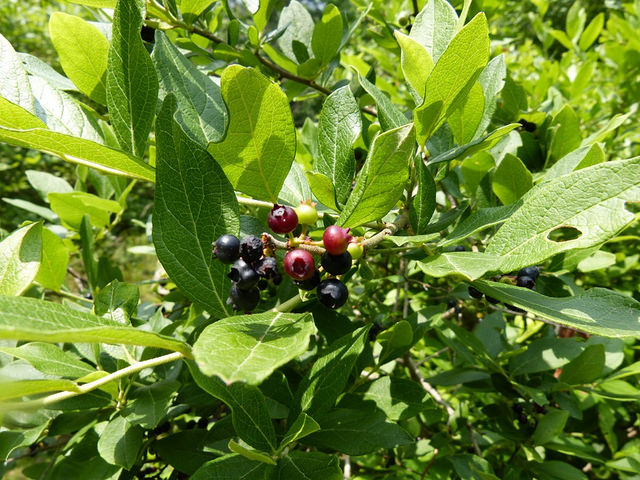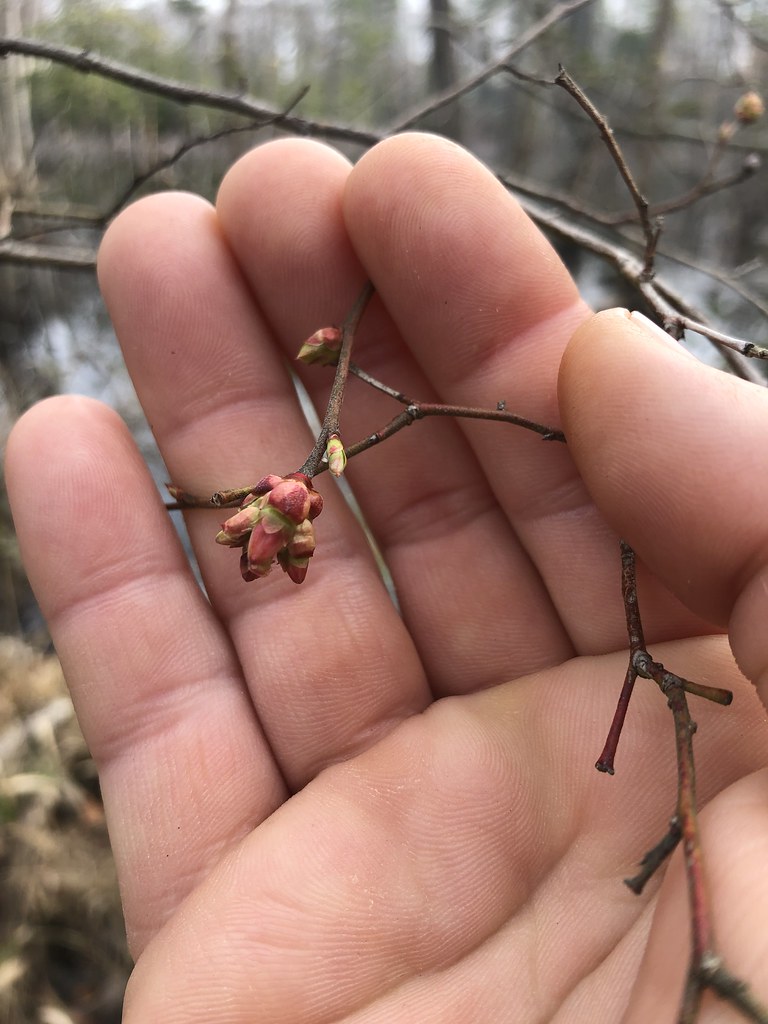Map Snapshot













47 Records
Description
This is the only species of highbush blueberry where the flowers appear before the leaves. Leaf margins are entire. Fruit are black and not glaucous.
Seasonality Snapshot
Source: Wikipedia
| Vaccinium fuscatum | |
|---|---|

| |
| Scientific classification | |
| Kingdom: | Plantae |
| Clade: | Tracheophytes |
| Clade: | Angiosperms |
| Clade: | Eudicots |
| Clade: | Asterids |
| Order: | Ericales |
| Family: | Ericaceae |
| Genus: | Vaccinium |
| Species: | V. fuscatum
|
| Binomial name | |
| Vaccinium fuscatum | |
Vaccinium fuscatum, the black highbush blueberry,[1] is a species of flowering plant in the heath family (Ericaceae). It is native to North America, where it is found in Ontario, Canada and the eastern United States.[2] Its typical natural habitat is wet areas such as bogs, pocosins, and swamps.[3]
Vaccinium fuscatum is an upright deciduous shrub. It can be distinguished from the similar-looking Vaccinium corymbosum by its stems and abaxial leaf surfaces are pubescent with dingy hairs, and its dark colored fruit that lacks a glaucous coating.[3][4] In addition it has an earlier bloom time, producing flowers in early spring.[3] It is sometimes considered a synonym of Vaccinium corymbosum.[5][6] Cytology is 2n = 24, 48.[7]
References
[edit]- ^ NRCS. "Vaccinium fuscatum". PLANTS Database. United States Department of Agriculture (USDA). Retrieved 17 January 2019.
- ^ "Vaccinium fuscatum". County-level distribution map from the North American Plant Atlas (NAPA). Biota of North America Program (BONAP). 2014. Retrieved 17 January 2019.
- ^ a b c Weakley, Alan (2015). "Flora of the Southern and Mid-Atlantic States".
- ^ "Vaccinium fuscatum". Go Botany. New England Wildflower Society. Retrieved 2019-01-17.
- ^ "Vaccinium fuscatum Aiton". Plants of the World Online. Royal Botanical Gardens Kew. Retrieved 29 September 2019.
- ^ Brouillet L, Desmet P, Coursol F, Meades SJ, Favreau M, Anions M, Bélisle P, Gendreau C, Shorthouse D, et al. (2010). "Vaccinium fuscatum Aiton". Database of Vascular Plants of Canada (VASCAN). Retrieved 29 September 2019.
- ^ Redpath, Lauren E.; Aryal, Rishi; Lynch, Nathan; Spencer, Jessica A.; Hulse-Kemp, Amanda M.; Ballington, James R.; Green, Jaimie; Bassil, Nahla; Hummer, Kim; Ranney, Thomas; Ashrafi, Hamid (2022). "Nuclear DNA contents and ploidy levels of North American Vaccinium species and interspecific hybrids". Scientia Horticulturae. 297. Elsevier BV: 110955. doi:10.1016/j.scienta.2022.110955. ISSN 0304-4238.
External links
[edit] Data related to Vaccinium fuscatum at Wikispecies
Data related to Vaccinium fuscatum at Wikispecies











